Carver Memorial Cemetery
Introduction
Text-to-speech Audio
Opened and dedicated on August 31, 1952, Carter Memorial Cemetery is the largest African-American cemetery in Shreveport. As the final resting place of many who shaped the history of Shreveport, particularly in the Black community, Carver Memorial Cemetery is a site of great historical significance. Among these graves are business leaders, educators, ministers, and veterans who have left their marks on the history of Shreveport. Many of these leaders were also activists who fought against the status quo during the Civil Rights Movement of the 1950s and 60s, changing the face of modern Shreveport.
Images
Carver Cemetery retains the rural feel its founders envisioned at its foundation in the mid-twentieth century.
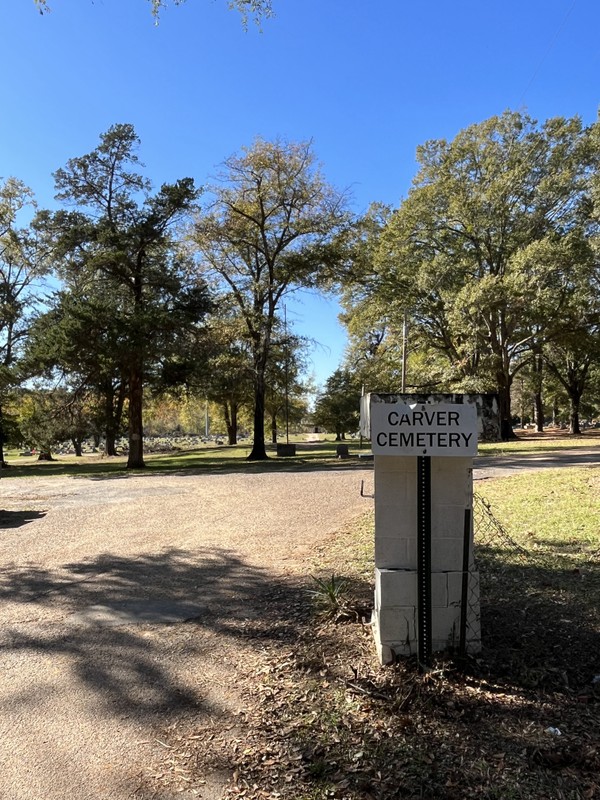
The inscription for this memorial to the war dead, dedicated in 1953, was written by poet E. D. Tyler.
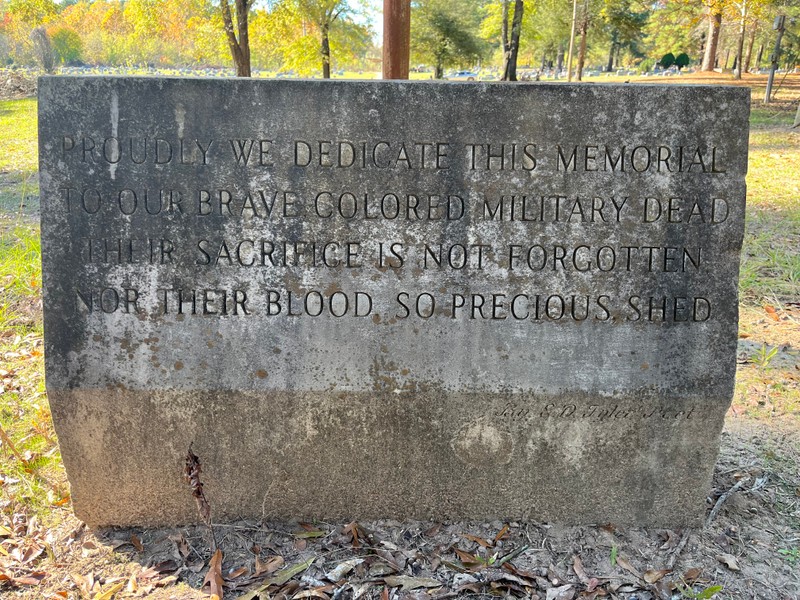
Monument styles within Carver Cemetery vary greatly. Many are adorned with flowers and trinkets, testifying to the continued use of the cemetery.
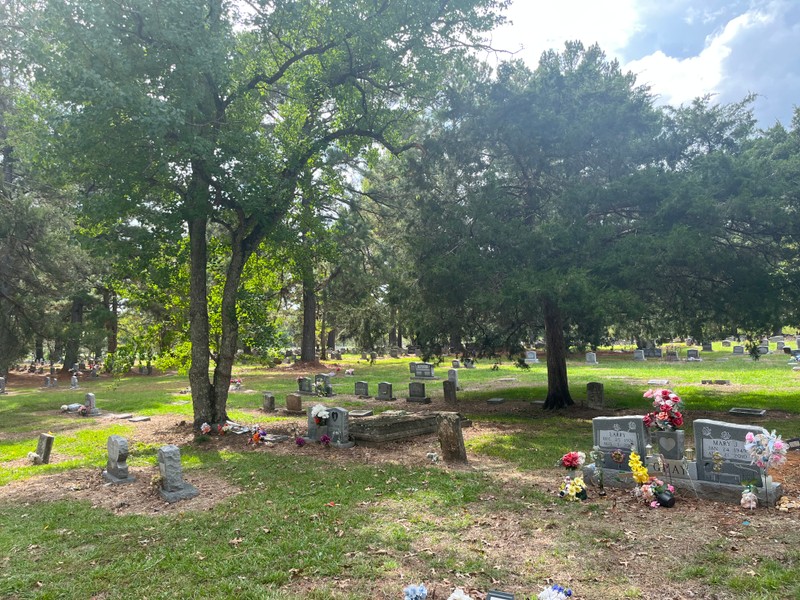
A Shreveport park and community center are named for one of this tomb's inhabitants. Although the plaque bearing her name is no longer attached, Shreveport philanthropist and retired schoolteacher Mrs. A.B. Palmer rests here next to her husband, Henry Palmer, a former Louisiana and Arkansas Railroad porter.
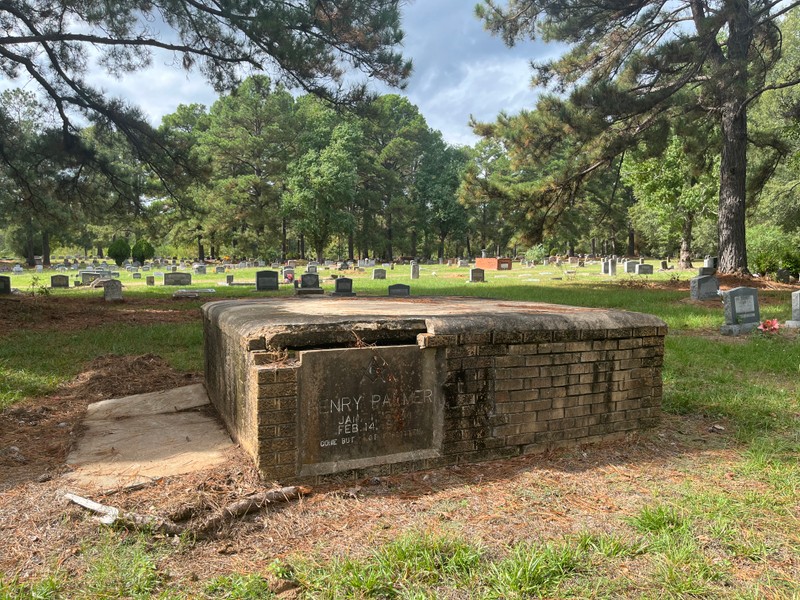
Melvin Collins Sr. founded The Shreveport Sun, the newspaper used for much of the research in this entry.
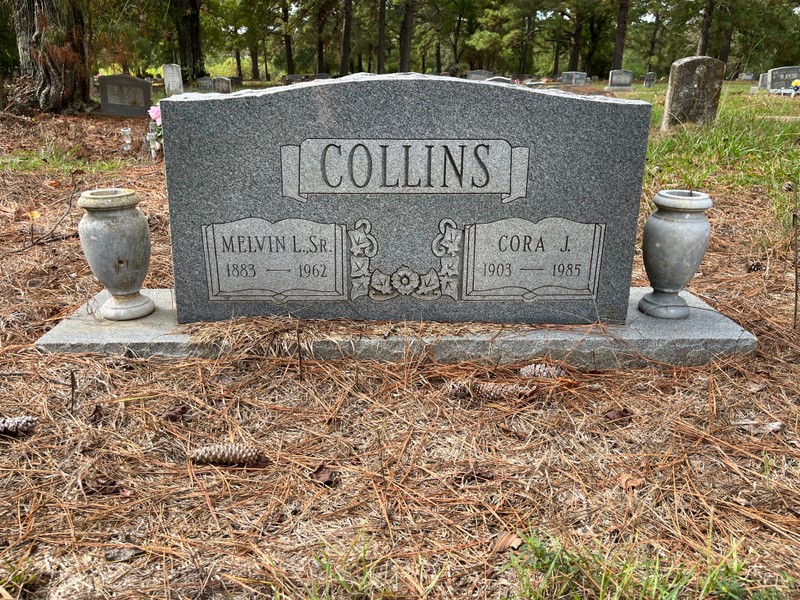
Melvin Colins Jr. continued his father's legacy as editor of The Shreveport Sun. During his time at the helm, The Sun ran stories about the turbulent Civil Rights Movement of the 1950s and 1960s and the continued battle for equality that followed.
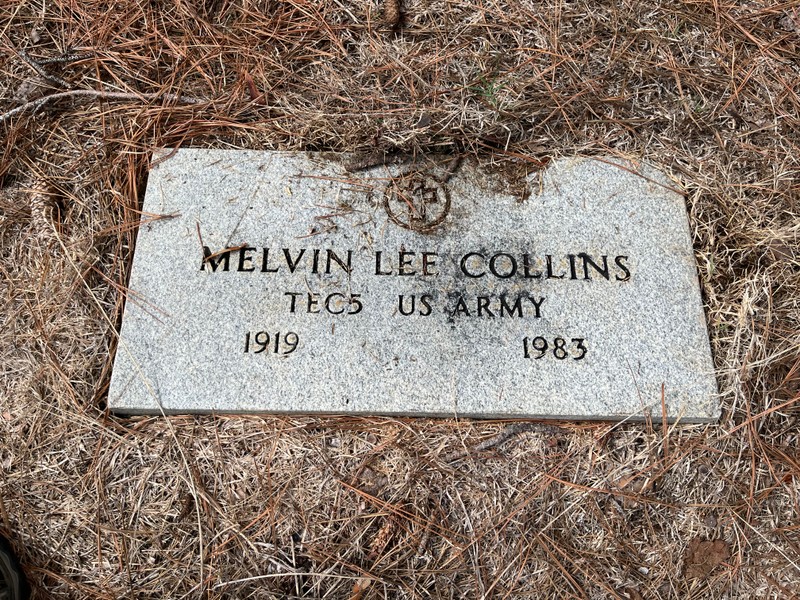
Attorney Hilry Huckaby III played a crucial role in changing Shreveport's city government, opening the doors for representation of the Black community.
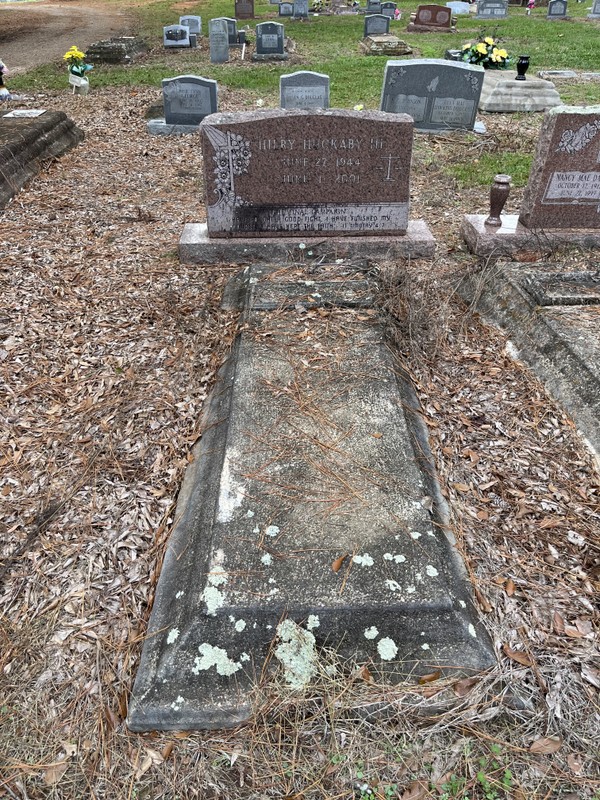
On August 23, 1952, The Shreveport Sun announced the upcoming opening and dedication of Carver Memorial Cemetery, described as a "beautiful garden of memories."
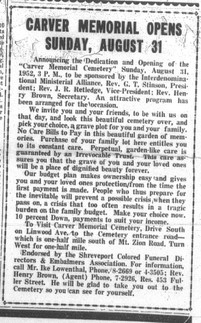
Backstory and Context
Text-to-speech Audio
Advertisements for Carver Memorial Cemetery suggest it was envisioned as a tranquil park-like atmosphere in a rural setting, conveniently located just outside city limits. Described as a perpetual care cemetery that “consists of more than 81 rolling, landscaped acres,”[1] Carver Memorial was “established to make you proud to be buried in its handsome, artistic park-like grounds.”[2] The public was “invited to make use of the beautiful picnic grounds” that boasted a public chapel and a sexton on-site twenty-four hours a day.[3] Today, Carver Memorial Cemetery is no longer outside the city limits, yet it retains its countryside ambiance.
Much of the history of twentieth-century Shreveport can be told through the stories of the interred in Carver Memorial Cemetery. Some are educators, such as Grace Thomas Wimberly, a private teacher at the old Midway School who helped to found Fairfield Methodist Church; and Katie Pringle, a teacher and librarian who served as the President of Caddo Education Association. Others are known for philanthropic endeavors. Mrs. A.B. Palmer, Treasurer for the Negro Joy Fund, raised money to provide a Christmas meal for the less fortunate. Others, such as Melvin Collins Sr. and Melvin Collins Jr., were business leaders. In 1920, Melvin Collins, Sr. founded The Shreveport Sun, Shreveport’s Black newspaper. Although he was intimidated, visited by the KKK, and told to leave town, he continued to report the news that other newspapers neglected. When he died in 1962, he was buried here, and his son, Melvin Collins, Jr., took over the responsibility of reporting essential news to the Black community. He is buried near his father. The contributions of Melvin Collins, Jr. and Melvin Collin, Sr. were crucial to the Black community and continue to be indispensable to historians. The Shreveport Sun provides a different account of local historical events that is especially critical regarding the Civil Rights Movement in Shreveport.
Carver Memorial Cemetery serves as the final resting place for many who were involved in the fight against racism and segregation. Bernice Smith, a beautician at the Modern Beauty Shop, opened her home to activists and freedom riders. Additionally, she served as a plaintiff in the lawsuit that desegregated the Caddo Parish School District. Many civil rights advocates, including Reverend Dr. Robert Knowles and Hilry Huckaby III, harnessed the power of the courts. Reverend Knowles was one of four plaintiffs in the federal case to desegregate Shreveport Trade School. At the same time, attorney, city council member, and judge Hilry Huckaby III played a pivotal role as the plaintiff and lawyer in a court case that changed Shreveport’s form of government from a commission to a city council. Before this change, at large voting meant Black candidates could not win elections. In 1978, Huckaby was the first Black man elected to the Shreveport City Council. These are only a small number of the people buried within Carver Memorial Cemetery who impacted Shreveport.
One Civil Rights leader has a connection to the Carver Memorial but is not buried here. Attorney Jesse Stone, whose name is connected to most lawsuits involving Shreveport and civil rights, served as a master of ceremonies at the ceremony for a monument “dedicated to the negro military dead of all wars” that was unveiled at the cemetery on Sunday, June 21, 1953.[4] The ceremony consisted of music by the men’s chorus of the Evergreen Baptist Church, a performance by the color guard from Barksdale Air Force Base, addresses by Reverends J.J. Bell and I.D. Peyton, and Dr. M. Haddox, and the unveiling of the monument by Financial Commissioner John McW. Ford. A local monument company donated the monument, while a local ironworks donated a flagpole placed nearby. The headstones of veterans can be seen dotted throughout Carver Memorial Cemetery, representing those who served during peacetime and in World Wars I and II, Korea, Vietnam, and the Persian Gulf.
Although Carver Memorial Cemetery was established in the early 1950s, some graves are much older. To make way for progress, bodies have been removed from at least one cemetery and reinterred here. In 1959, the Fairfield Methodist Church, a Black congregation, applied to the Caddo District Court and received approval to remove graves from the church’s cemetery on the corner of Hollywood and Linwood Avenues. Approximately 325 bodies from graves dated as early as 1875 were reinterred at Carver, stipulating that graves of “unknown and unidentified persons be grouped around a common monument.”[5] The former Fairfield Methodist Church Cemetery land was sold to Esso Standard Oil Co. These graves serve as a reminder that cemeteries, primarily Black cemeteries, have a history of vulnerability to disruption and desecration. The stories of the people buried within Carver Memorial are proof of the historical significance of cemeteries and the importance of maintaining them for posterity, as well as allowing the dead to rest in peace.
[1] “Chas. L. Thomas Realty Company Agent for Carver Memorial Cemetery,” The Shreveport Sun, 14 Feb. 1953.
[2] “Carver Memorial Cemetery Advertisement,” The Shreveport Sun, Jan. 21, 1956.
[3] “Chas. L. Thomas Realty Company Agent for Carver Memorial Cemetery,” The Shreveport Sun, 14 Feb. 1953.
[4] “Monument to Negro War Dead to be Unveiled,” The Shreveport Journal, Jun. 18, 1953.
[5] “Court Approves Removal of Graves from Church Plot,” The Shreveport Journal, Sep. 4, 1959.
Cite This Entry
Julianna Horrell on behalf of Louisiana State University Shreveport and Julianna Horrell. "Carver Memorial Cemetery." Clio: Your Guide to History. September 12, 2024. Accessed March 26, 2025. https://theclio.com/entry/178973
Sources
Burton, Willie. On the Black Side of Shreveport: A History. Edition 2nd. Self-published, 1994.
“Carver Memorial Cemetery Advertisement.” The Shreveport Sun (Shreveport) January 21, 1956.
“Carver Memorial Cemetery Advertisement.” The Shreveport Sun (Shreveport) February 14, 1953.
"Carver Memorial Opens Sunday, August 31." The Shreveport Sun (Shreveport) August 23, 1952.
“Chas. L. Thomas Realty Company Agent for Carver Memorial Cemetery.” The Shreveport Sun (Shreveport) February 14, 1953.
“Church Obtains Order to Move Unknown Bodies.” The Shreveport Journal (Shreveport) June 5, 1959.
“Church Ordered to Show Cause in Body Removal.” The Shreveport Journal (Shreveport) June 9, 1959.
“Colored Sexton.” The Shreveport Times. (Shreveport) July 18, 1952.
“Court Approves Removal of Graves from Church Plot.” The Shreveport Journal (Shreveport) September 4, 1959.
"Funeral Services Held for Mrs. Hattie Perry." The Shreveport Sun (Shreveport) July 25, 1968.
"Henry Palmer, 67, Succumbs Here." The Shreveport Times (Shreveport) February 16, 1955.
McKee, Daryl. “Progress of Shreveport’s Black Press.” The Shreveport Journal (Shreveport) March 23, 1977.
McLain, Asriel Gamaliel. Coming Forth as Pure Gold: A Look at Civil Rights Activities in Shreveport, Louisiana 1959 - 1968. Self-published, n.d.
“Memorial Monument Planning Committee Meets.” The Shreveport Sun (Shreveport) May 30, 1953.
“Minutes of the Caddo Parish School Board: Meeting Held on November 2, 1966.” The Shreveport Journal (Shreveport) November 10, 1966.
Molloy, Ellen. “With a Little Help: Joy Funds Can Bring Christmas to Many. The Shreveport Times. (Shreveport) November 29, 1970.
“Monument to Negro War Dead to be Unveiled.” The Shreveport Journal. (Shreveport) June 18, 1953.
“Negro Soldier Monument to be Dedicated.” The Shreveport Times (Shreveport) June 18, 1953.
“Obituary: Hilry Huckaby, III.” The Shreveport Times (Shreveport) June 7, 2001.
“Well Known Local Negro Woman Dies.” The Shreveport Journal. (Shreveport) June 18, 1960.
West, Gary. “Sun Brings Black Voice to Media.” The Shreveport Journal. (Shreveport) February. 22, 1984.
Photo credit: Julianna Horrell
Photo credit: Julianna Horrell
Photo credit: Julianna Horrell
Photo credit: Julianna Horrell
Photo credit: Julianna Horrell
Photo credit: Julianna Horrell
Photo credit: Julianna Horrell
The Shreveport Sun, 23 August 1952.

